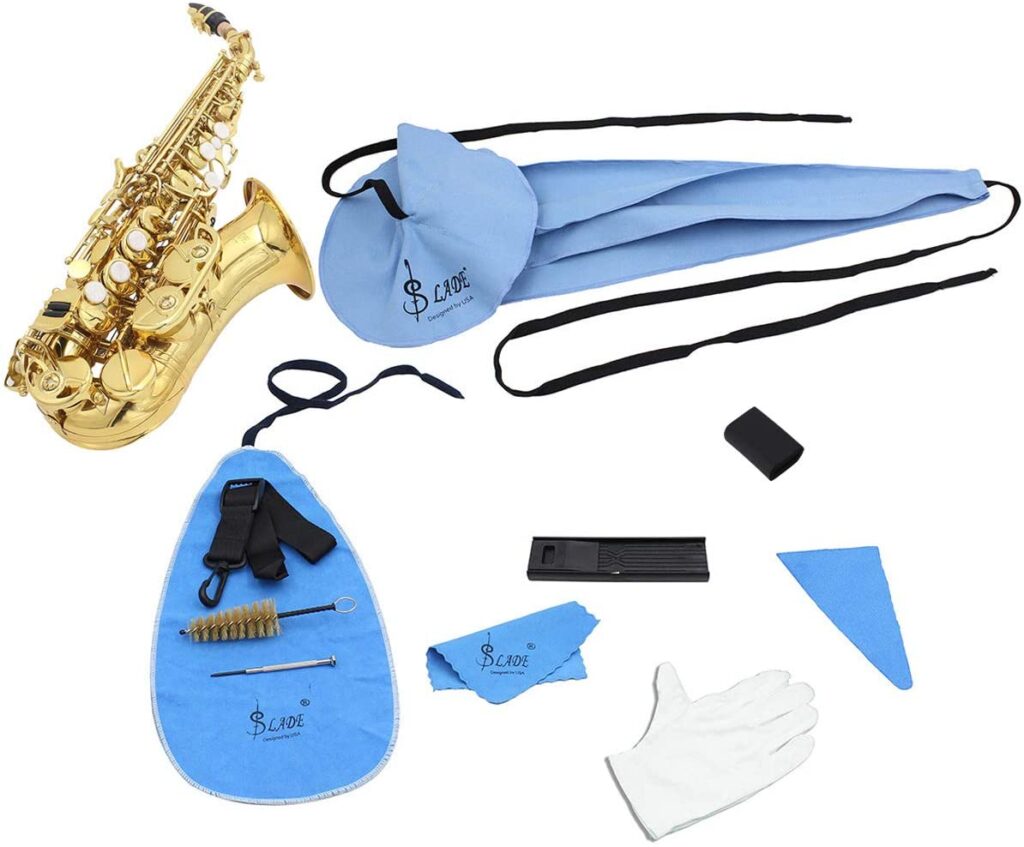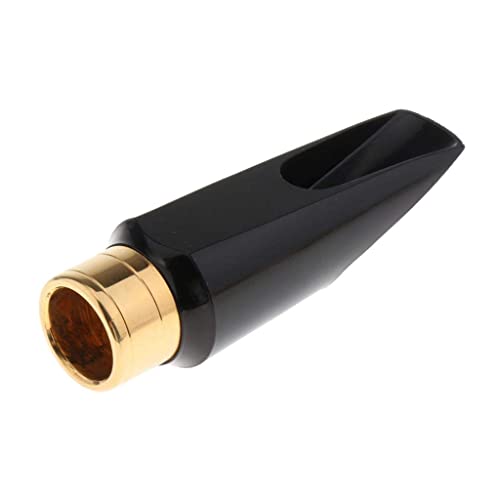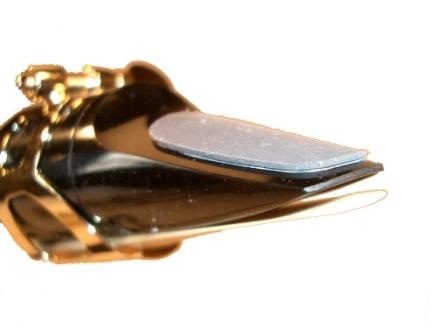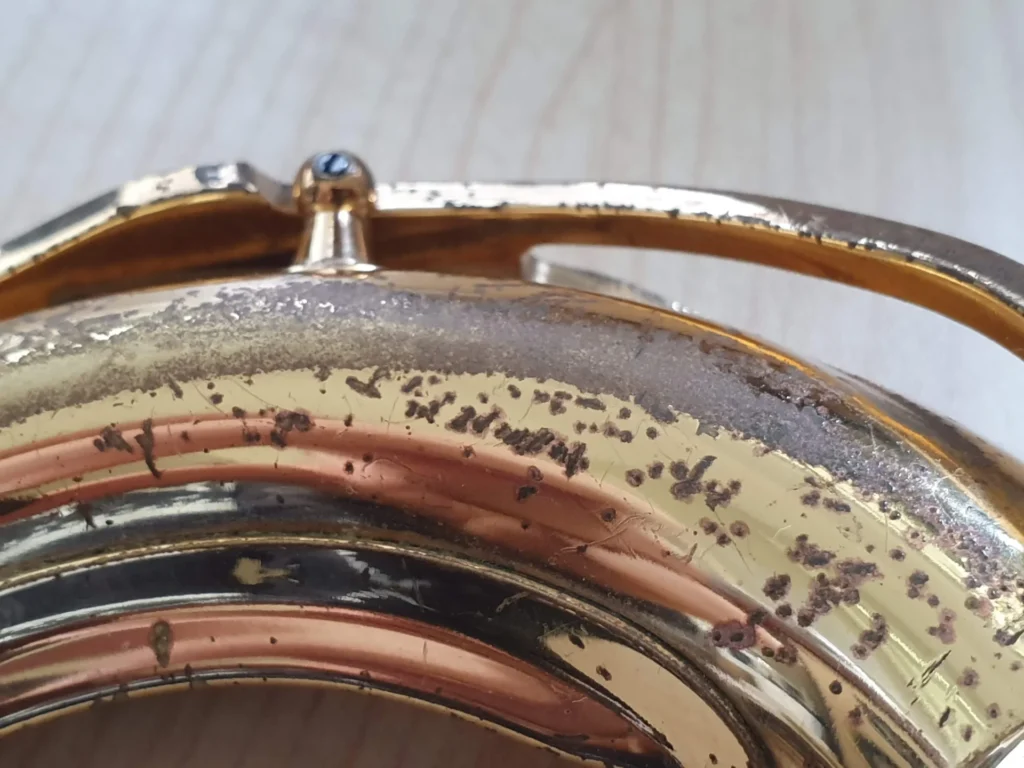Playing the saxophone requires blowing air, and with-it saliva and bacteria, into the instrument, so to perform a regular maintenance and clean your saxophone prevents you from contracting any illness caused by bacteria build up in the sax and extends the life of your instrument.
Also, keeping a clean saxophone could prevent future repairs that may be expensive.
According to musicians and health professionals, if you don’t clean your instrument on a regular basis, black mold can grow inside it and cause a condition called “Saxophone Lung”.
Cleaning a saxophone is a relatively simple process and investing in a cleaning kit is essential and will save you a lot of time and effort.
What happens if you don't clean your saxophone?
Saxophone lung is a rare type of hypersensitivity pneumonia, in which patients develop allergic pulmonary disease when exposed to fungi that invade instruments.
Basically, they have an allergic reaction to the mold that builds up inside the saxophone.
Symptoms include coughing and wheezing that last for long periods of time and don’t respond to typical treatments, including inhalers, steroids, and antibiotics.
No treatment will be effective until you have a clean saxophone and remove the cause for the reaction.
So, to avoid health issues you need to regularly clean the instrument so there’s no bacteria and mold build up.
How often should you clean your saxophone?
Immediately after you finish practicing you should swab the instrument, including the neck and mouthpiece.
If you practice every day, then perform this daily; if not do it only when you practice.
If you practice more than once a day, remember to keep a clean saxophone after playing and do this after every session.
Your mouthpiece should be washed once per month, and this is the most important part of the saxophone you need to keep clean because it comes directly in contact with your mouth and airways.
Besides swabbing it after every practice, at least once a month wash it with lukewarm water, soap and a soft-bristle mouthpiece brush or a small toothbrush to remove dirt and calcification.
How to clean the outside of my saxophone?
To have a clean saxophone on the outside you need to:
1. Polish the body:
Spread a small amount of spray furniture wax with a brass lacquer polishing cloth along the body of the saxophone. Washing clothes, paper towels or cleaning products that are not intended to be used on brass may cause damage to your instrument.
2. Check your screws:
Tighten any loose rod screws and check all of them are in order. Be careful you don’t over-torque them.
3. Reassemble your saxophone:
After you’ve made sure every part has been correctly cleaned and maintained, reassemble your instrument, and play it so ensure it was done properly and that it looks, feels, and plays beautifully.
4. Clean your cleaners:
Your saxophone cleaning kit should also be taken care of. Before storing your swabs, pad savers and brushes wash them by hand with some soap and allow them to dry. If cleaned properly, they should last a long time.

How to clean the inside of a saxophone?
Here’s a step-by-step guide on how to clean the inside of your saxophone.
1. Swab the body:
To clean the body you need a brush or a cloth, called saxophone cleaning swab, that has a long string with a weight on one end; it’s usually included in the saxophone cleaning kit.
You need to place the weighted end into the bell of the sax and turn it upside down.
Then you pull the string from the opposite end to gently swab the body. Repeat this several times to ensure you don’t leave anything behind.
Swabbing dries the interior to preserve the pads, removes any build-up from foods, beverages or saliva and therefore avoids bacteria to grow.
2. Clean saxophone neck:
Take the flexible swab from your cleaning kit and insert it through the larger base opening on the neck and push it until it comes out from the narrow side, where the cork is attached.
Do this thoroughly to remove any debris or particle that may have stuck to the inside walls of the neck.
If you use water to clean the neck, make sure it doesn’t contact the cork because it may deform it. You can also let it soak with vinegar or brush it with detergent to get rid of excess build-up.
3. Use a pad saver:
These tools are very helpful saxophone cleaning accessories to ensure there’s no moisture left after swabbing.
You insert it through the body’s narrow end, let it absorb any moisture for a few seconds, then gently remove it.
4. Care for the keypads:
Make sure there are no sticky pads as you play the sax and visually check for signs of wear and tear.
Aid yourself with a piece of paper or a wet cotton swab to remove any residue from where the pads meet the tone.
How to clean saxophone mouthpiece?
The mouthpiece should be cleaned often because it’s the part that meets your mouth.
To clean it you need to remove the reed and then use a mouthpiece brush, a bottle brush, or a small toothbrush to clean the inside.
Run some water through it and then pull a clean cloth through the mouthpiece to dry and remove any debris left behind.
You can also use antiseptic mouthwash or detergent.
Clean saxophone reeds as well; make sure you wipe them after each use with a clean towel or cotton swab to prevent bacteria and fungal growth.


5 Tips for saxophone maintenance
Avoid using warm, hot, or cold water on ebonite mouthpieces: hot or cold water can cause the mouthpiece to discolor, so if you need to use water lukewarm or room temperature is recommended. This is not an issue with metal mouthpieces.
Beware of vinegar: white vinegar is very effective to remove bacteria and build-up, but it may damage the glossy finish of the mouthpiece. Better stick to soap and water.
Avoid silver polish: even if you have a silver saxophone, silver polish removes tarnish by stripping a small layer of the metal off, so if you use it continuously it will eventually strip away all the silver.
Saxophones don’t rust: What you may think is rust on your saxophone it’s most likely tarnish, so to clean saxophone rust, wipe the areas with a tarnish cloth.
Use mouthpiece patches: To avoid bite marks on your mouthpiece, use patches to cushion your teeth. Before cleaning the mouthpiece, remove the patches to be able to clean underneath them as well as saliva may have gotten stuck there. After cleaning it, place a new mouthpiece patch in its place.


Answers to some of the most frequent questions:
How do you clean a saxophone without taking it apart?
The best way to make sure you have a completely clean saxophone is by dismantling it and cleaning each part.
But some musicians recommend soaking the whole instrument in soapy water for a few days and then running a dry swab through it several times until it’s completely dry.
Still, you need to remove the neck and mouthpiece to clean separately.
How do you polish a saxophone?
Use a soft microfiber polish cloth and wipe the entire outer surface of the sax with it.
Be gentle on the tops of the keys and rods so you don’t damage them.
Also, don’t wipe the surface of the pads. This should be done at least weekly to ensure a clean saxophone.
How do you clean rusty saxophone?
Saxophones don’t rust, but what you see as rust may be tarnish and that can be cleaned.
Tarnish is most common for silver instruments but can be seen in brass saxophones as well.
To clean it you need to wipe the tarnished areas with a tarnish cloth doing the same motions as if you were polishing the instrument.
Be gentle on the rods and the tops of the keys.
How much does it cost to get a saxophone cleaned?
Getting a saxophone cleaning service and repair, with the addition of changing the pads and corks, can cost up to $350 to $400 dollars.
There can be additional costs for extra accessories, felts replacements and other services that boost up the price to $600+ dollars.
Can I wash my saxophone with water?
Yes, you can wash your saxophone with water.
But always make sure to dry it off completely inside and outside to prevent moisture from growing mold and damaging the body of the instrument.
Conclusion
Keeping your saxophone in excellent condition includes cleaning it and maintaining each and every part as sanitized as possible.
Remember that not doing it may cause important health issues that in the end will affect your playability and results.
Set up a care routine as part of your practice so you get used to it and it becomes second nature. In the end it will make you a much better musician.

